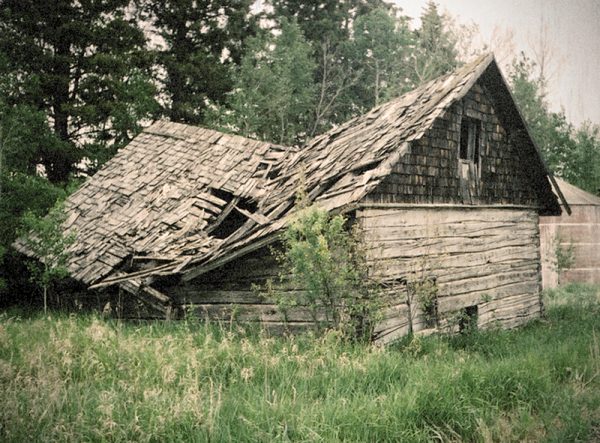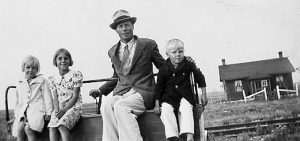By John Seierstad – Nanaimo, B.C.
My life was filled with hard work, travel, and adventure, however, none can remotely match the experience of travelling to the north with my father when we left the drought-stricken homestead in the hills north of Parkbeg, Sask.
It was April 10, 1934, and I was 10. Father included me on his northward journey to Eldersley, a distance of 250 miles, which required 17 days to complete.
Equipped with two horses pulling a wagon loaded with food, hand tools, a walking plow, a diamond harrow section, clean cloths, a bunk equipped with a straw filled mattress, and one spare horse in case of emergency.
On a sheet of brown wrapping paper, father drew a rough sketch of his projected route with information he gained from a Saskatchewan Wheat Pool elevator map. We travelled on trails which ran parallel to the railway lines and every evening he recorded the approximate mileage travelled each day.
Families abandoned farms
A day after departure from Saskatoon, we crossed paths with a caravan of four families. We camped beside them on a grass-covered hill above a gently flowing creek.
They, like us, abandoned their non-productive farmland near Weyburn and aimed for homestead land in the Peace River area. Included in the four families were eight adults, 15 kids, 30 head of cows and calves, 26 horses, and three Collie dogs.
There were five young pigs in the front of a double crate which was shared with a flock of chickens. The crate was anchored on a two wheel trailer and attached to the rear of a wagon pulled by two large black Percheron horses.
An array of old farm implements was loaded on four hayracks. The household utensils, canned food, 700 pounds of flour, vegetables, and clothing, all covered with canvas, was piled in four wagon boxes.
The cattle were driven by two teenage boys riding horses, aided by well-trained dogs.
Kids slept under wagon boxes
They were well organized; every able-bodied person had his or her scheduled responsibility. An old-time thresher cooking caboose was used for food preparation and a daily batch of bread was baked. The kids all slept in the open air under the cover of wagon boxes and enjoyed the experience of outdoor living.
At 8 a.m. father and I continued in a northeasterly direction. At daybreak three days later, we were greeted with a foot of snow. After a three-day delay, trudging over muddy trails, and 17 days after leaving the prairie homestead, we arrived at the home of Berger Beck and family at Eldersley, Sask.
Unimproved land, owned by the CNR was available at $10 per acre. No down payment was required and no payments were demanded for the following four years. After serious assessment, my father made a decision to settle on the SW quarter of section 33 Township, 44 range 13 west of the 3rd.
Gratitude endures
Clearing bush from three acres for a building site and garden spot was our first task. White poplar trees were felled for the purpose of building a log house. I was delegated the responsibility of peeling the bark from the logs while father fashioned the building material.
Other duties required me to walk to Eldersley for supplies and mail every second day. To this day, 78 years later, my gratitude goes out to Bill and Mrs. Edmonds for their generosity, thoughtfulness, and kindness.
I met Bill near noon one day and visited with him explaining that I, along with my father were living in a wagon box in the bush not far away. Bill’s interest in me developed to the point where he invited me to have dinner with them which I had secretly hoped for!
Upon entering the Edmonds’ house, Mrs. Edmonds immediately welcomed me with a place at the table and served a fine meal. During the course of the meal they learned a lot about my father and me – where we had arrived from, and the purpose of our arrival. From that day forward, I was a fairly regular visitor at the Edmond’s dinner table.
Log House ready for move-in
The log house was roughly completed and ready for my mother and the rest of our family to occupy on Nov. 2. Thankfully, we managed through that first harsh winter with deep snow and low temperatures.

The historical contrast of spending the summer of 1934 living in a wagon box and 78 years later, I enjoy the comfort of an ocean-front condo at Nanaimo. The lifestyle in each location brings feelings of satisfaction and appreciation for a great lifetime of experience.



